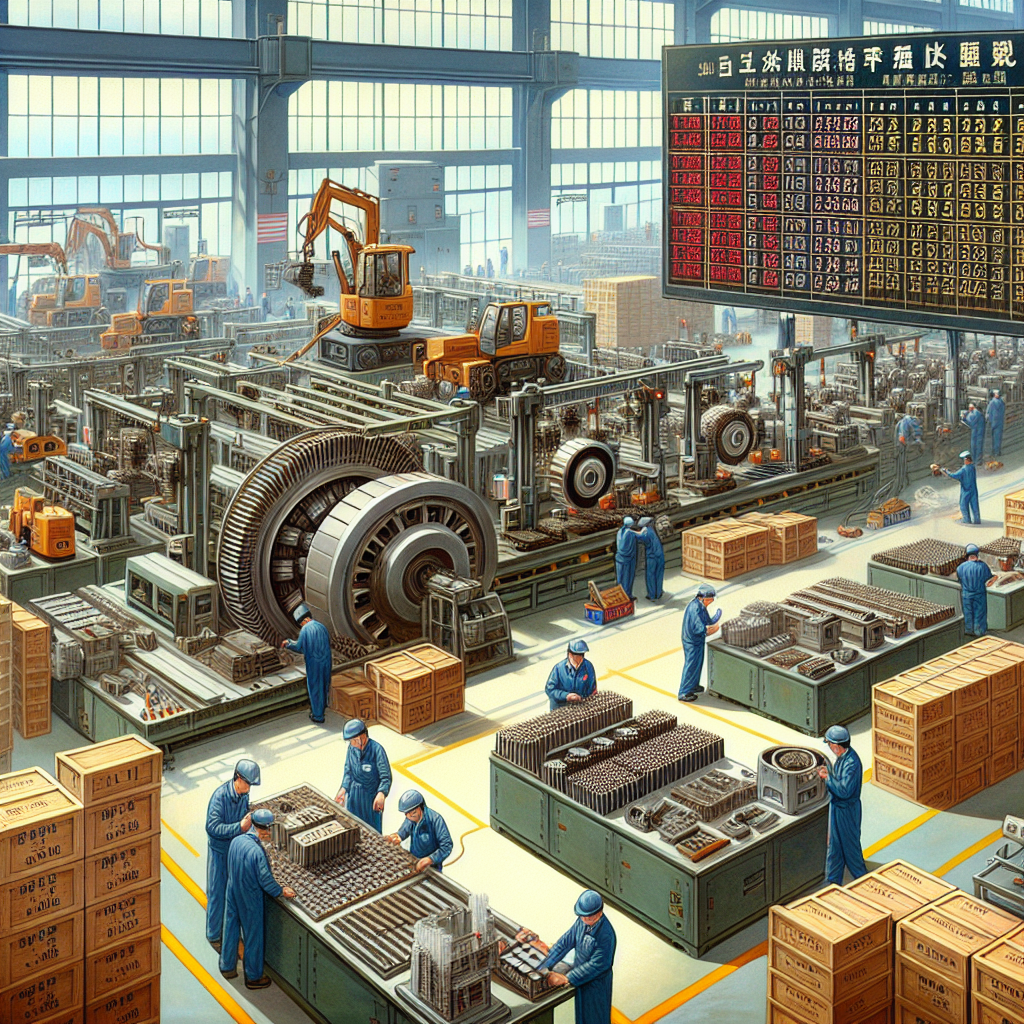In another reference, the Chinese rare earth magnetic materials manufacturing giant JL Mag Rare-Earth announced on Wednesday (June 11) that it has obtained approval from the authorities to export magnetic materials, components, and motor rotors to the United States, Europe, and other regions. This news is seen as a signal of easing tensions in the US-China trade relationship and may help alleviate supply pressures in the global automotive, aerospace, and semiconductor industries.
This wave of export permits comes at a time when the US and China are holding high-level trade talks in London, seeking to resolve the trade standoff. The US hopes China will relax its rare earth export restrictions, while China hopes the US will lift restrictions on certain high-tech exports. The approval for JL Mag Rare-Earth to export indicates that China is conditionally releasing some rare earth supplies.
According to the statement released by JL Mag Rare-Earth, the approved export products include rare earth magnetic materials, components, and motor rotors, with export destinations covering the US, Europe, and Southeast Asia.
Following China’s inclusion of some rare earth minerals and magnetic materials in the export control list in April, JL Mag Rare-Earth submitted applications to the authorities and is gradually receiving approvals. The statement was released on the official investor relations platform “Interactive Easy” of the Shenzhen Stock Exchange, but did not disclose specific permit quantities or issuance times.
In addition to JL Mag Rare-Earth, several Shenzhen-listed rare earth magnet companies such as Innuovo and Zhong Ke San Huan have also stated that they have obtained export permits from the authorities.
It is believed that this move may help alleviate global supply chain pressures caused by export controls, especially in industries such as automotive, aerospace, and semiconductor where demand for high-performance magnetic materials is increasing.
As JL Mag Rare-Earth received approval for exports, US and Chinese officials are conducting a two-day high-level meeting in London. The two sides are attempting to negotiate some form of exchange between China’s rare earth export restrictions and the US’s export controls on advanced semiconductors.
US Commerce Secretary Howard Lutnick stated that a preliminary framework agreement has been reached between the two countries to “balance” the lifting of China’s rare earth export restrictions and recent US export bans in a balanced manner.
This agreement still requires final approval from the leaders of the US and China, and if agreed upon, both sides will further work towards implementation.
The two parties must reach a more comprehensive agreement before August 10, otherwise the current US tariffs of approximately 30% will increase to 145%, and Chinese tariffs may rise from 10% to 125%.
US officials expressed after the negotiations that they “fully expect” the issue of rare earth and magnetic material exports to be resolved, indicating that rare earth has become one of the priority issues in this round of negotiations.
Prior to this, the American Chamber of Commerce in China stated that some Chinese suppliers have obtained six-month rare earth export permits. However, due to significant backlogs in application processing, overall issuance progress remains slow, and market uncertainty persists.
According to Chinese customs data, the total value of China’s rare earth magnetic material exports to foreign countries decreased by 54% in April this year (May data has not been released yet). Delays in rare earth export approvals have exacerbated supply pressures in industries such as automobiles, wind turbine technology, and national defense, prompting countries to seek diversification in their supply chains.
Following JL Mag Rare-Earth’s announcement of receiving export permits, its stock listed in Hong Kong surged by as much as 12% during trading hours, reaching its highest level since 2022, showing the market’s high sensitivity to the relaxation of exports.
Despite some companies obtaining short-term permits, experts believe that the structural dependence of the West on Chinese rare earth magnetic materials remains unresolved.
Columnist Andy Home of Reuters pointed out that instead of waiting for new supply chains to gradually rebuild, it may be more timely and feasible to reduce demand for rare earths from the product design end.
“The West cannot control the supply, but can adjust the demand,” he wrote, noting that since 2017, about 97% of electric vehicles sold globally have used rare earth-driven motors. In addition, rare earth magnets are also used in other systems inside cars, controlling functions like heating, entertainment systems, brakes, and even reminding drivers to fasten their seatbelts. This continuous increase in the overall demand for magnetic materials in automobiles.
Currently, the CCP controls about 95% of the global neodymium-iron-boron (NdFeB) magnet supply chain, holding key manufacturing processes and raw material sources.
Home believes that while Western governments are investing in developing a complete industry chain from mining to magnetic materials, it takes a long time to build, and the civilian sector often comes after the military sector.
He pointed out, “Instead of waiting for the new supply chain to be established, car manufacturers may find that strategically reducing demand from the design end can quickly reduce reliance on Chinese magnets.”

